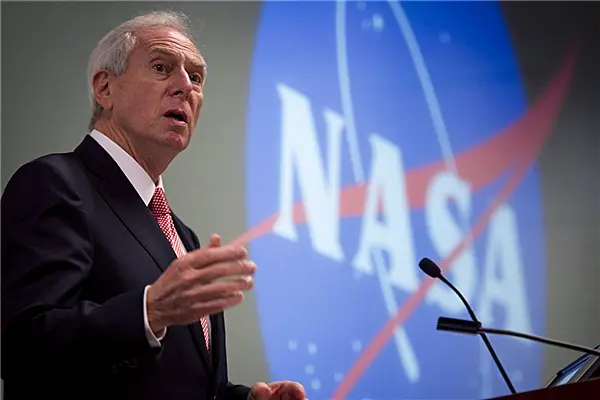Dan Goldinspent nine years as chief of the National Aeronautics and Space Administration, overseeing complex projects like the international space station. Now he’s preparing for another challenging launch: a startup that has been working in secret for 10 years on a form of brain-like computing.
His San Diego-based company, KnuEdge, has developed an unusual processor chip and related hardware and software, aiming to bring dramatic speed improvements to tough chores like finding patterns in images, sounds and financial data. KnuEdge is disclosing its plans for the first time Monday, along with a parallel effort in software to help recognize speech in noisy environments.
Many companies are working in related areas, often loosely categorized under the termartificial intelligence. Most are using software that runs on time-tested varieties of computer hardware, not designing chips from scratch.
But there is a widening recognition that conventional processors may not be the best tools for all computing jobs. Nor are they increasing in speed as quickly as they once did, in part because of diminishing returns from miniaturizing circuitry under the pattern known as Moore’s Law.
In one high-profile effort, Google Inc.recently disclosedit is using an internally designed chip for chores related to machine learning, a branch of artificial intelligence, along with chips fromIntelCorp.and graphical processing units fromNvidiaCorp.International Business MachinesCorp.also opted to design its own processor for specialized tasks that emulates aspects of the brain.
Mr. Goldin, who led the space agency from 1992 to 2001, had a similar inspiration. He started by studying with Nobel laureateGerald Edelman,a prominent theorist on the workings of the brain who died in 2014.
“I was sick and tired of hearing the world is ending, Moore’s Law is dead,” he said. “We need to bring in neurobiology.”
Any kind of chip startup is ararity these days, as venture capitalists prefer investments that take less time and money to produce a return. The 75-year-old Mr. Goldin, KnuEdge’s chief executive, said he managed to raise $100 million from individuals with the patience to wait for a payoff. KnuEdge hired expert talent slowly and selectively, he said, but the company now has 100 employees.
Conventional chips outperform humans at chores like high-speed mathematics and sifting through large databases. However, humans are far better at tasks like distinguishing one face or voice from another, partly because of the brain’s parallel structure.
Where a typical Intel chip might have one to a dozen or so processing cores, Mr. Goldin estimated that people have a couple of hundred billion neurons—the cells that process and transmit information. Each may be able to communicate to 10,000 to 100,000 others dispersed through the brain, he said.
KnuEdge’s first chip has 256 processor cores, each of which can be working on a different program—unlike some other chips with many cores that execute the same kind of instruction at once, Mr. Goldin said. It also developed a companion communication technology that can link up to 512,000 of the chips at extremely high speed.
“It is the ability to scale to unprecedented levels that makes us different,” Mr. Goldin said.
Mr. Goldin isn’t disclosing customers that have received the first circuit boards containing the KnuEdge chips. But he expects financial-service firms may be particularly interested, for purposes such asanalyzing patterns of transactionsto prevent fraud. KnuEdge expects to begin selling boards and chassis based on the technology near the end of the third quarter.
Few outsiders have seen the technology in action. ButJim McGregor,an analyst at Tirias Research briefed on the company’s plans, said he expects such novel chip designs will play an important future role in tasks like machine learning.
“I think Dan is a pioneer of the inevitable future architecture trends in computer engineering,” saidLarry Smarr,director of the California Institute for Telecommunications and Information Technology, which expects to include KnuEdge’s hardware in a lab that will study pattern-recognition technology. “I think all major companies will be doing this.”
(THE WALL STREET JOURNAL)
 简体中文
简体中文

